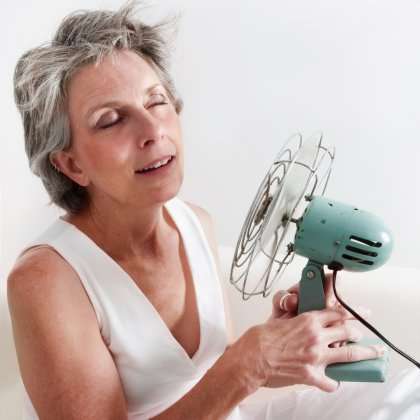Hysterectomy with ovary conservation doubles odds of hot flushes, night sweats

Research has shown that hysterectomy doubles the odds of a woman enduring persistent hot flushes and night sweats, even if they retain their ovaries.
A University of Queensland School of Public Health study has found these hot flushes and sweats – known as vasomotor symptoms – can persist for more than a decade, seriously affecting quality of life.
PhD candidate Louise Wilson examined 17 years of data from more than 6000 women in the Australian Longitudinal Study on Women's Health (ALSWH).
"Approximately 20 per cent of the women had a hysterectomy – with ovary conservation – before the age of 50," Ms Wilson said.
"Almost a third of these women experienced hot flushes that persisted long term, and around one in five were afflicted by constant night sweats.
"These rates were double those of women who did not have a hysterectomy during the study period, and could not be explained by differences in lifestyle or socioeconomic factors.
"We believe this to be the first longitudinal study to explore long-term patterns of hot flushes and night sweats by hysterectomy status."
Hysterectomy remains one of the most common gynaecological procedures performed worldwide.
In economically developed countries rates are highest among women aged between 40 and 50.
ALSWH Director Professor Gita Mishra said women who had a hysterectomy with both ovaries removed were consistently reported to have more frequent or severe hot flushes and night sweats.
"That is thought to be related to the abrupt decline in oestrogen levels post-surgery," Professor Mishra said.
"However, the effect of a hysterectomy when ovaries are retained has been less clear.
"This study shows that for many women hot flushes and night sweats can have a major impact on their quality of life, productivity and social life for well over a decade."
Professor Mishra said further research was needed to determine the reasons for this higher risk.
"It is likely that the biological mechanism is extremely complex, but transition to menopause earlier in life is likely to be a factor for these women who all underwent the procedure before the age of 50.
"Women and their medical practitioners need to be aware of the increased risk of persistent vasomotor symptoms when considering treatment options."
The research is published in the journal Maturitas.
More information: Louise F. Wilson et al. Hot flushes and night sweats symptom profiles over a 17-year period in mid-aged women: The role of hysterectomy with ovarian conservation, Maturitas (2016). DOI: 10.1016/j.maturitas.2016.05.011
















